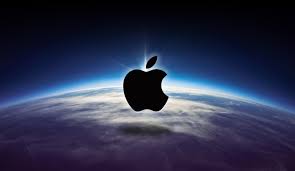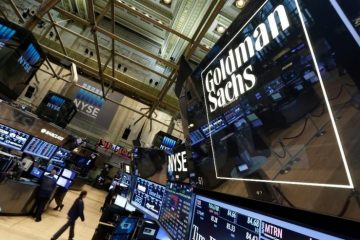How Tax Reform Could Make Apple a $1 Trillion Company

The Wall Street bulls swear that sweeping tax reform is the key to putting a newly-resurgent corporate America on the fast track for years to come. What better way to gauge the potential power of the Republican Party business tax plan than to examine its impact on the world’s most valuable, and closely-watched publicly-traded company, Apple aapl ?
A close look at the what tax reform would mean for Apple yields two conclusions. First, if enacted, the GOP’s plan to lower the statutory corporate rate to from 35% to 20% would substantially lift Apple’s already gargantuan profits. It would also unleash a windfall of cash now parked in foreign subsidiaries that the iPhone maker could use for a whole new chapter of expansion and innovation. In other words, tax reform is potentially a major positive for Apple’s basic business—and just might make it the world’s first $ 1 trillion company.
The second point: Investors have bid up Apple’s shares by 50% since the presidential election. The danger is that they’re already paying far too much in anticipation of the tax-slashing revolution, designed to make America super-competitive in world markets, that Republicans were promising until recently. For example, the previous House GOP proposal for a 15% corporate rate would have lifted Apple to a far higher plane of profitability than the 20% proposal. To be sure, the scaled-down blueprint would still be a positive for Apple. The question is whether it’s potent enough to justify Wall Street’s unbridled optimism.
This analysis is based on an in-depth report by Albert Meyer, a former accounting professor and founder of money-manager Bastiat Capital. With Meyer’s assistance, I adjusted his assumption of a reduction of today’s 35% statutory rate from his preferred levy of 15%, to the 20% proposed levy that President Trump and GOP leaders unveiled in their nine-page “framework” for tax reform, released in late September.
What a difference 5% makes
Meyer points out that Apple’s effective tax rate for its last fully-reported fiscal year, the 12 months ended September 2016, was 25.6%. That levy is well below the official federal rate of 35%. Why is the effective rate lower than the official levy? It’s mainly because multinationals only pay the in-country tax on earnings booked in say, Ireland or Hungary—where rates are far lower than in the U.S.—if they plan to invest the profits in those nations permanently, rather than eventually returning the money stateside.
(As Meyer observes, Apple employs that levy-lowering practice modestly when compared to many multinationals, and hence pays a relatively high effective rate.)
A shift to a 20% rate would lift the bottom line, though how much depends on details yet to be disclosed. Naturally, Apple wouldn’t pay the full 20%, just as it doesn’t pay 35% today; what matters is that what it owes in taxes each year—its effective tax bill subtracted from pre-tax income to arrive at net income—would fall. The GOP plan would shift the U.S. from a system that taxes all worldwide income at U.S. rates to the “territorial” model employed by most industrialized nations. Under a territorial regime, companies would pay tax on profits generated in a foreign country only in that country, and in theory, would no longer need to pay the difference between the invariably lower local tax, and our 35%, the highest rate in the industrialized world.
But there’s a catch: The GOP plan would also impose a minimum levy on all foreign earnings, to ensure companies don’t undermine the U.S. tax base by shifting a large portions of their earnings to tax-shelter nations. At the same time, it would eliminate the biggest loophole, the option of leaving earnings “permanently” invested abroad, subject only to local tax. The framework doesn’t specify the rate for the minimum tax, except to say that it would be below the statutory levy of 20%.
The call for a minimum tax is a big disappointment for America’s multinationals. It will force them to pay a lot more than if it were omitted. For example, on its big operations in Ireland, Apple would be liable only for the 12.5% Irish tax under the territorial regimes, and not additional liability in the U.S. But if the minimum tax were, say, 17%, it would force U.S. manufacturers like Apple to pay an extra 4.5% to the Treasury on their Irish earnings—the difference between the 12.5% Irish rate and the U.S. minimum.
So how would the heart of the proposal, the combination of the overall 20% levy and the minimum tax, shape Apple’s future? In his study, Meyer assumes that Apple’s pre-tax earnings remain flat in the new fiscal year that began on October 1, at $ 61.4 billion. If it paid the same 25.6% as last year, Apple would owe $ 15.7 billion in all income taxes (including levies payable to foreign nations). Hence, its net earnings would be the same as in FY 2016, at $ 45.7 billion.
If the GOP plan were enacted so that it applied to Apple’s FY 2018, assuming a 17% minimum tax on foreign earnings, its effective tax rate would drop by around 8.5 points to just under 17%. Its overall tax bill would fall from $ 15.7 billion to around $ 10 billion, for a savings of nearly $ 6 billion. Apple’s net earnings would rise by the amount of the tax savings, in rough numbers, from $ 45.7 to $ 51.4 billion, waxing 12.5%.
Sounds great. But the GOP plan isn’t nearly as favorable as the original Republican House proposal, which advocated a 15% rate and no floor for foreign earnings. Though getting to anything like 15% was always a long-shot, it was viewed by many multinationals as a kind of platonic ideal of tax reform; and it appears that hopes for a plan far more ambitious than the current one has powered the recent historic run in the S&P 500, and especially in Apple shares. Using Meyer’s numbers, at a 15% rate and no minimum tax, Apple would pay just $ 7.1 billion in all income taxes in FY 2018, 45% of its bill in 2016, and one-third less than at the 20% rate.
Bringing the money home
Still, the GOP framework provides an additional carrot that multinationals applaud. The plan mandates that all profits parked abroad be repatriated. It would tax those returning profits at a low rate; the White House has talked about a levy of around 10%. At the close of FY 2016, Apple held $ 90 billion in foreign subs designated for possible return to the U.S. Today, that cache is probably well over $ 100 billion. Hence, Apple could garner a windfall of $ 90 billion ($ 100 billion in overseas profits minus $ 10 billion in federal taxes).
Where are the these two big breaks—the rate reduction and the influx of foreign cash—likely to steer Apple’s stock price? If FY 2018 earnings suddenly jump to $ 51.4 billion, and Apple keeps its relatively modest PE of 17.7, its market cap would soar by $ 111 billion, from $ 808 million to $ 919 billion. The $ 90 billion-plus windfall could provide a further boost by funding buybacks, special dividends or a suite of new products. In a short time, tax reform could make Apple America’s first $ 1 trillion company.
That’s the sunniest scenario, and it’s being pushed hard by Apple’s many fans on Wall Street. It’s more likely that while Apple’s fundamentals would improve substantially, its share price might not follow. The reason is basic: In the past 12 months, Apple’s shares have gained 31%, while its earnings for its first three quarters rose just 2.6%. It’s not clear that a new 20% levy and minimum tax package is favorable enough to justify the huge rally in Apple’s stock.
And the GOP proposal could just be an opening bid that gets whittled down by compromise in Congress. Getting to a 20% rate would be a good thing for Apple’s business, and there’s no better proxy for corporate America. But in this frothy market, would it attach a booster rocket to Apple’s stock? Don’t bet on it.


